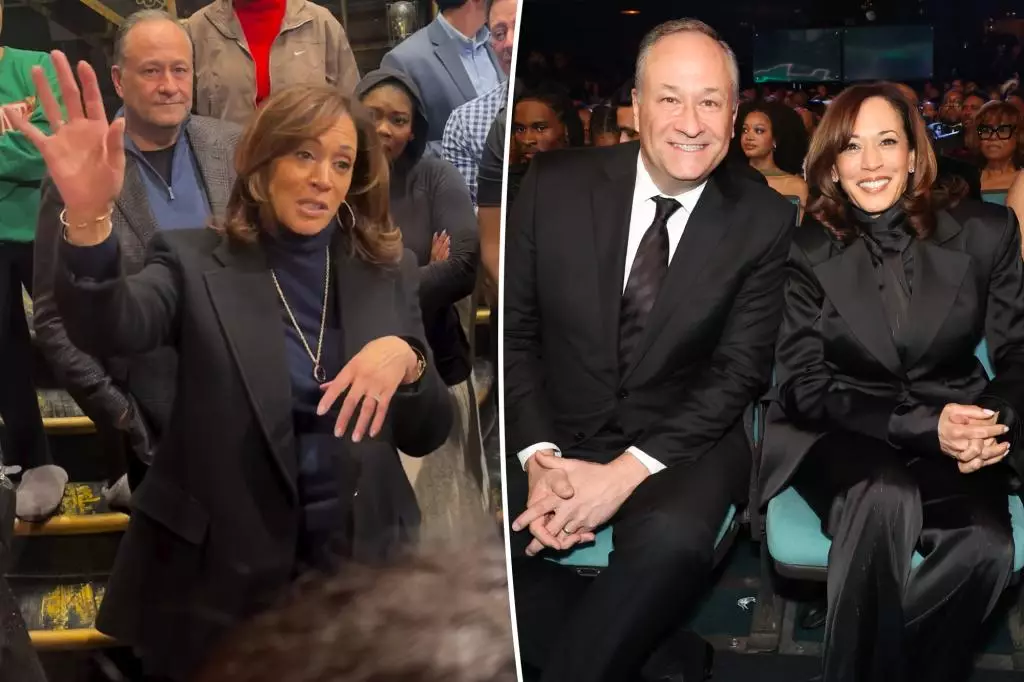In the ever-evolving landscape of American politics, few figures have navigated the tumultuous waters as precariously as Kamala Harris. Following the controversial election cycle that culminated in Donald Trump’s unexpected victory, many within the Democratic Party find themselves questioning Harris’ visibility and efficacy as a prominent leader. A resounding sentiment echoing through party insiders suggests that Harris has seemingly gone “MIA” when America needs her most. While her prominence as VP initially stirred excitement, the perceived disconnect from her constituents and the wider public is raising alarms.
Leadership Vacuum and Public Perception
Amidst the criticism, insiders lament the significant investment of resources—over $2 billion—into elevating Harris, only to witness her adopting a strategy that leans toward complacency. While attending Broadway shows may appear innocuous, the juxtaposition of her public activities against the vast parking lot of political initiatives creates a stark image of a leader out of touch with pressing societal concerns. Statements from various Democratic sources highlight a growing frustration, pointing fingers not just at inaction but also at an apparent risk-averse demeanor, which has been cited as an impediment to connecting with voters.
The criticism intensifies when contrasted with figures like California Governor Gavin Newsom, who’s actively engaging with the public discourse through innovative platforms and methods. His recent podcast launch, while not universally endorsed, demonstrates a willingness to be one of the leaders shaping contemporary discussions. In contrast, Harris’ absence in these modern media engagements underscores a disconnect that could have lasting consequences for her political brand.
Media Relations: A Double-Edged Sword
An insightful commentary suggests that Harris’ retreat from media scrutiny—including a notable lack of interviews—has hindered opportunities for personal connection and vulnerability with her audience. The idea that voters had insufficient means to “peel back the onion” on her personality and values speaks volumes about the importance of engagement in the digital age. In the current political atmosphere, characterized by rapid information dissemination and evolving voter expectations, fostering a connection through relatable narratives and transparency is paramount.
Moreover, the growing consensus among donors and grassroots supporters reveals a deep-seated anxiety about the future of Harris’ political trajectory. This re-evaluation of her involvement in the party has not only raised eyebrows but has also sparked conversation about the implications of her distancing from traditional political backers. As one frustrated donor articulated, the crisis brought on by the recent election raises fundamental questions about strategy and effectiveness in a political climate that demands accountability.
A Glimmer of Engagement
Despite the swirling criticism, it’s important to acknowledge that Harris has made attempts to engage with communities, notably her participation in events like the NAACP Image Awards and her fundraising efforts for the DNC. These activities indicate a desire to support vital Democratic initiatives. Perhaps the real story lies not in her public visibility, but in the manner she chooses to redefine her role. As sources close to her remark, there are those who perceive her strategic calculations as intentional, allowing her to operate away from the spotlight while maintaining connections with key leaders and stakeholders.
In this delicate balance of public engagement and private discussions, Harris stands at a crossroads. The path forward requires not just acknowledging these critiques but actively addressing them through meaningful dialogue and engaging narratives. Real change lies in her ability to reconnect with the electorate in an authentic manner, particularly as they navigate a world rife with complexity and discontent. Harris’ journey, while fraught with challenges, also presents opportunities for growth and transformation.

